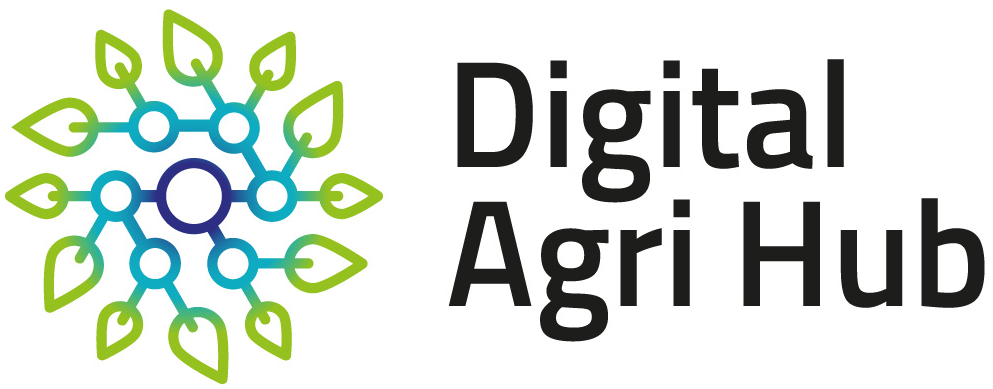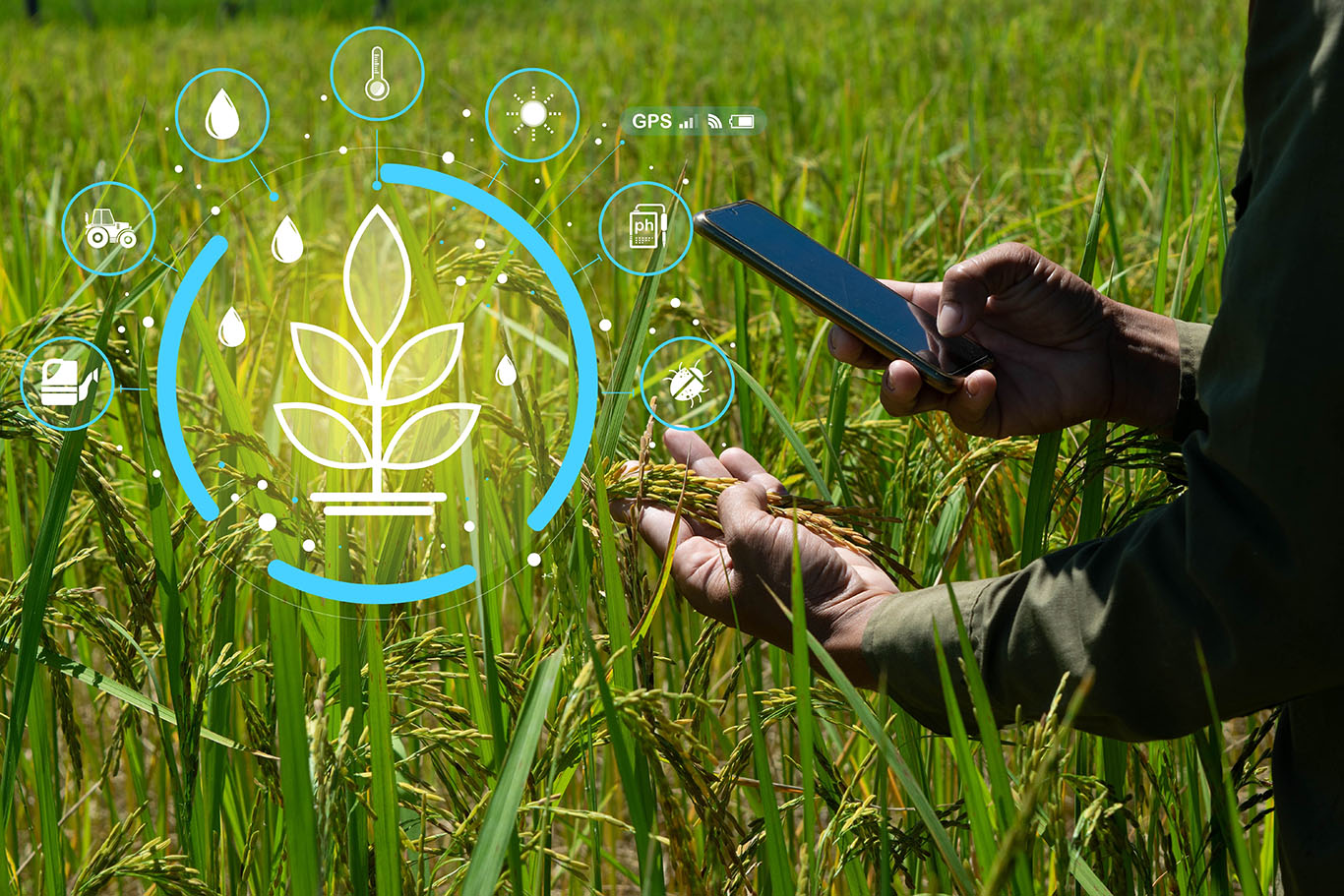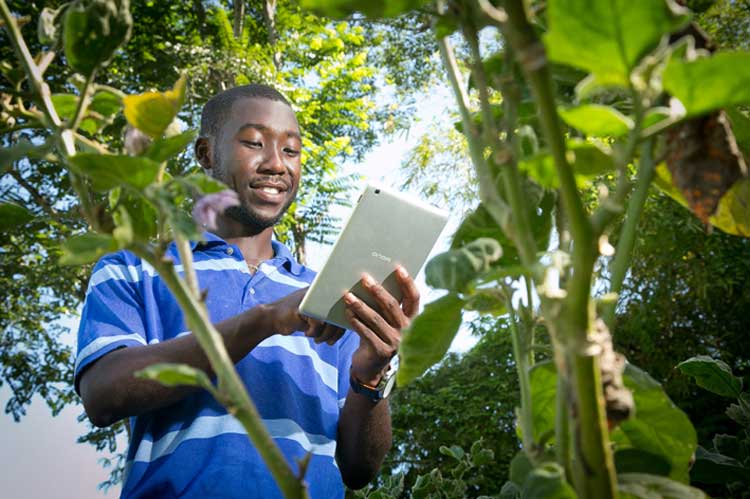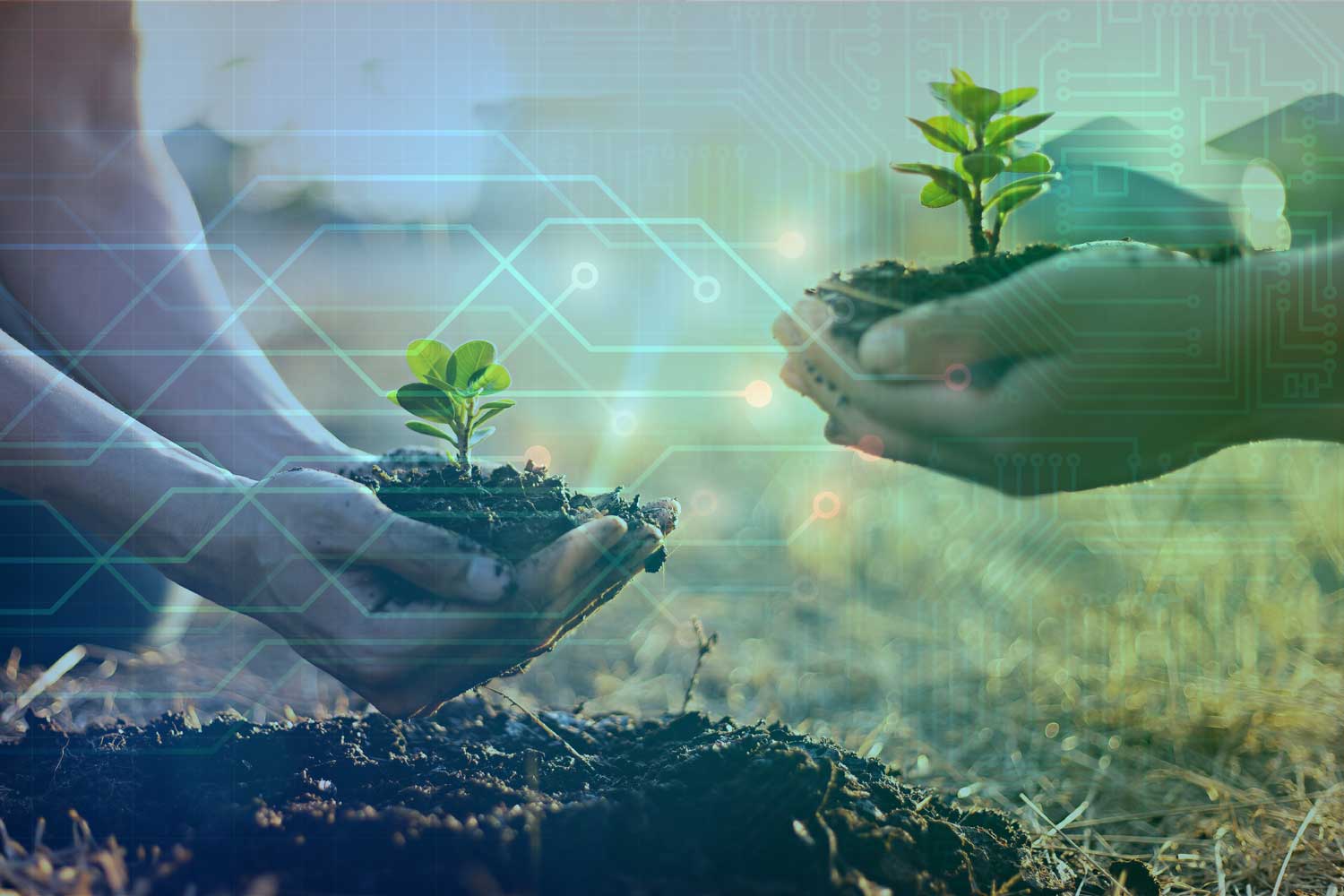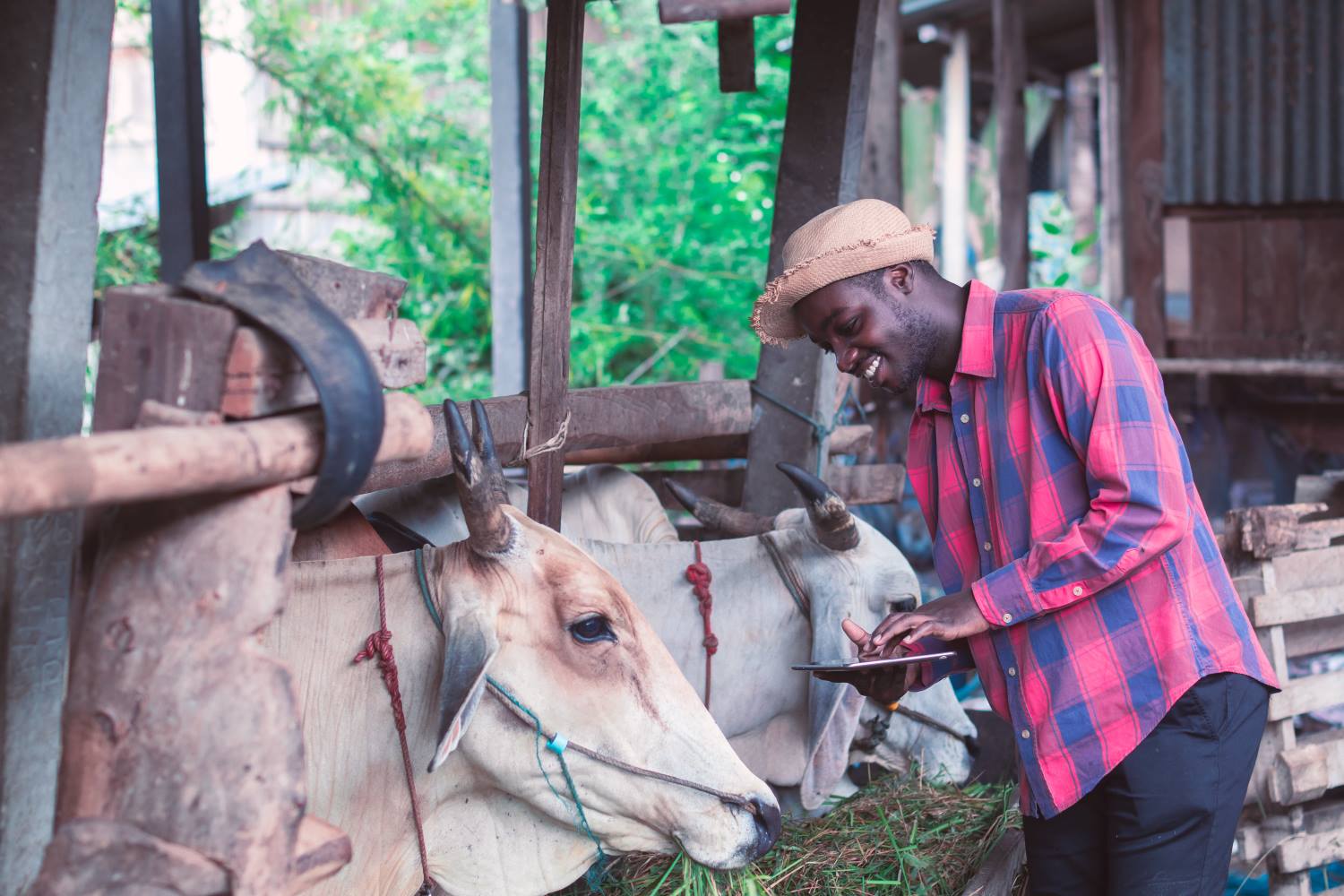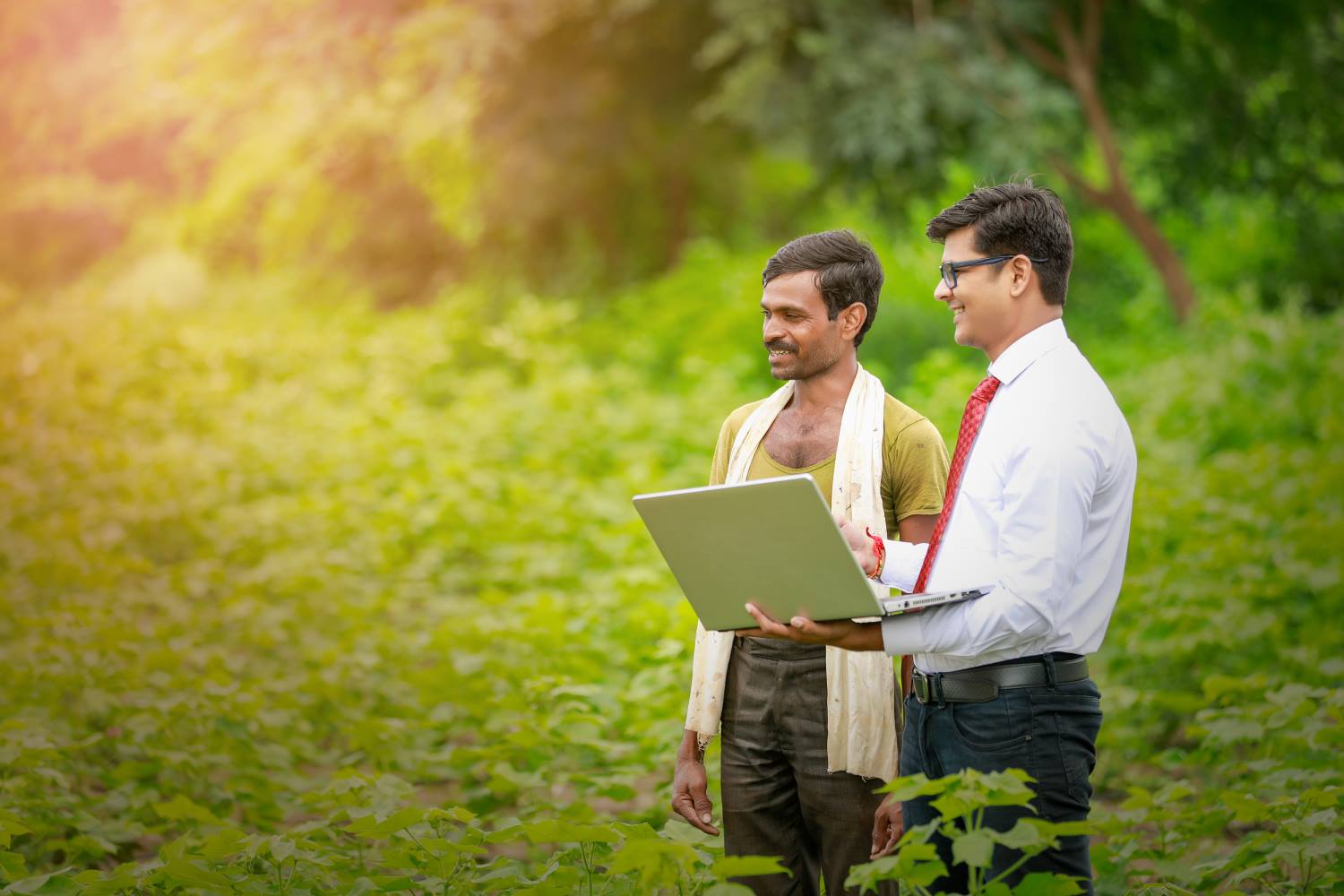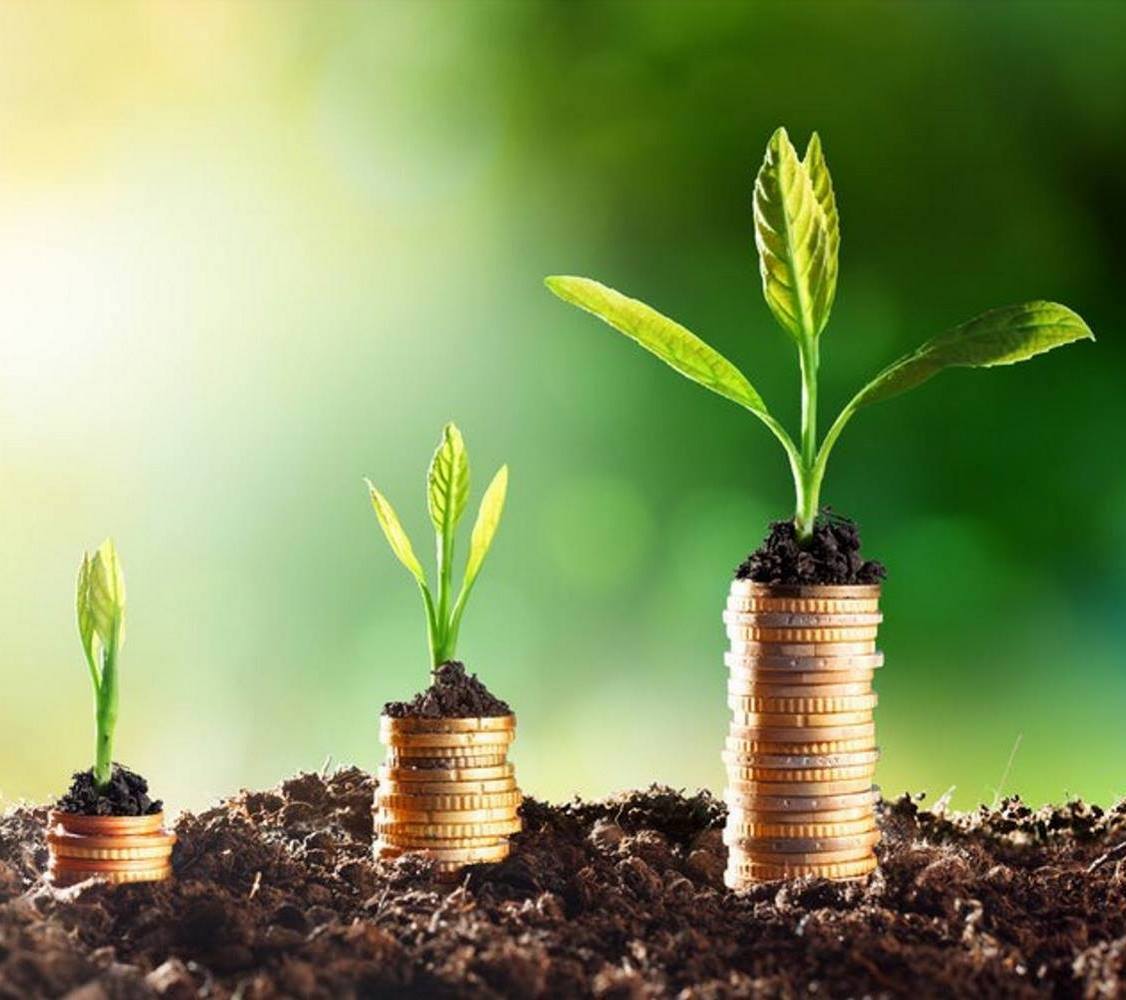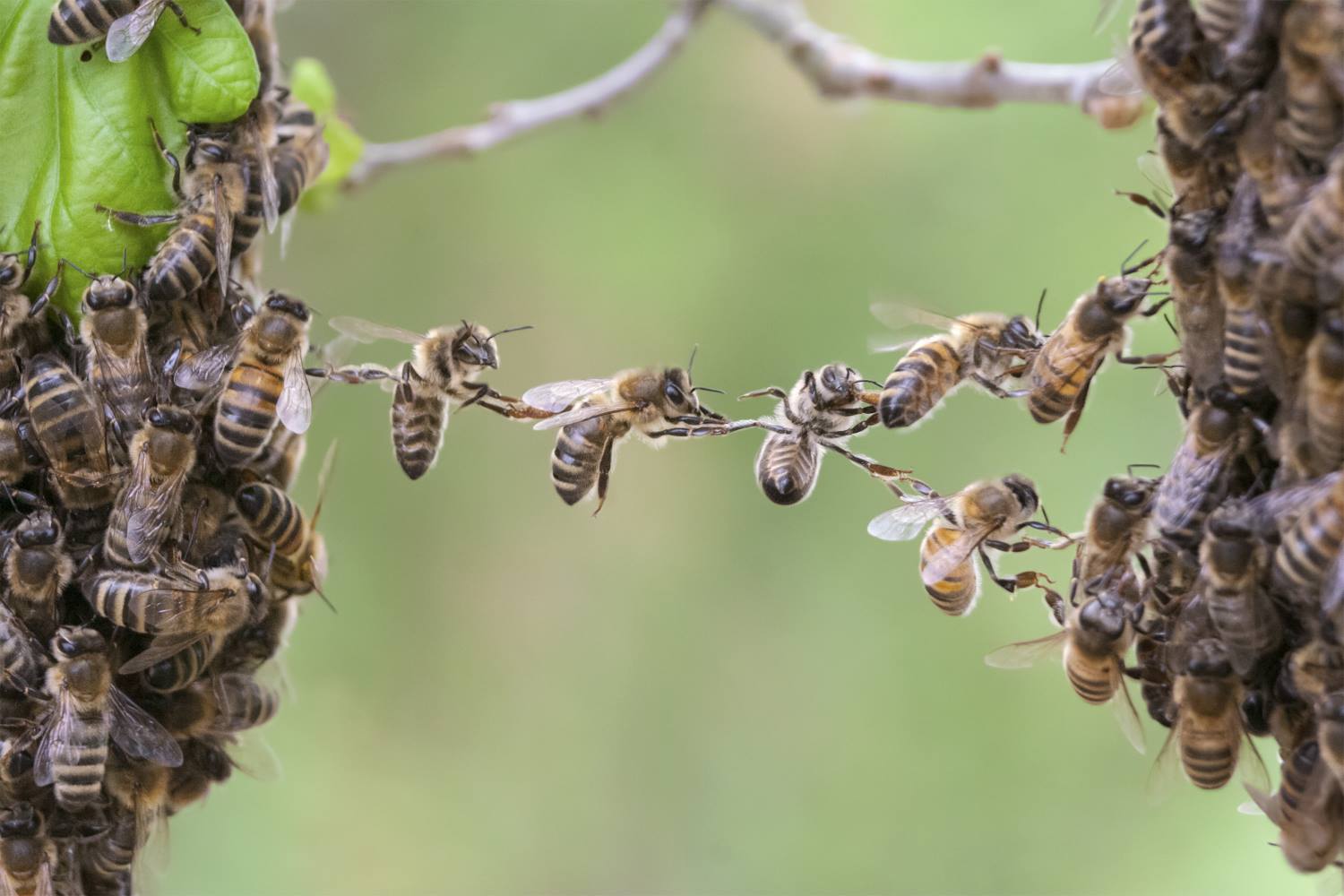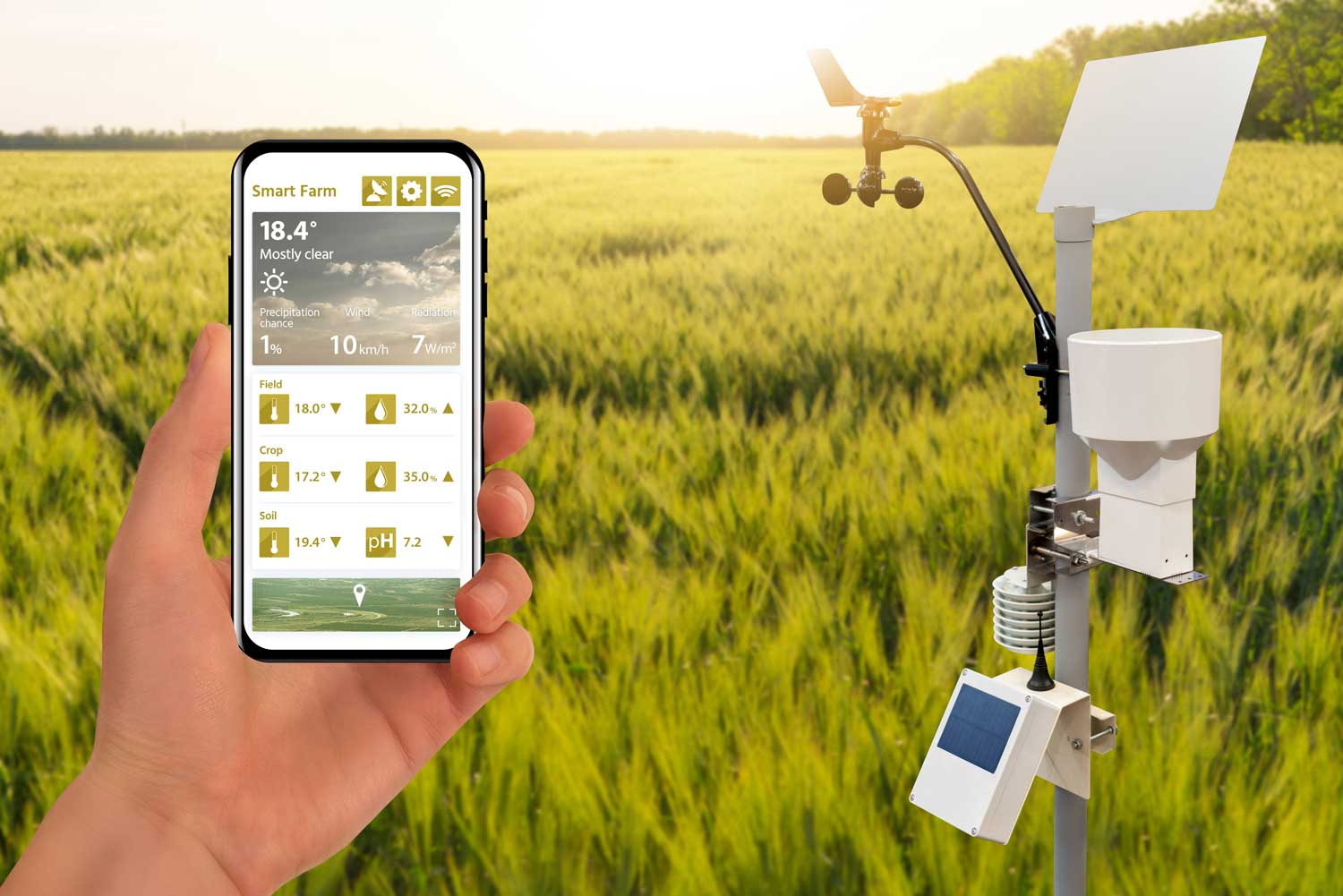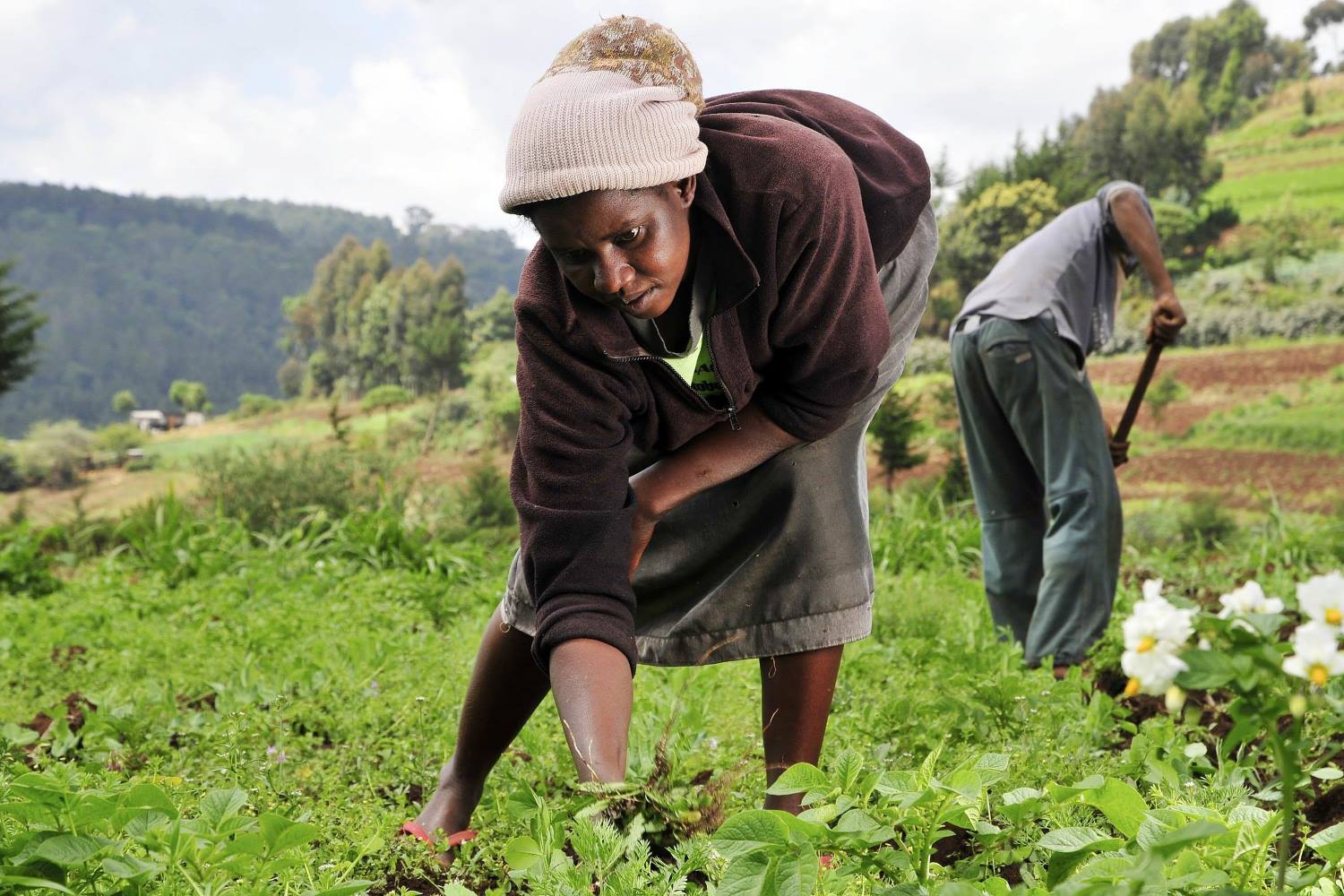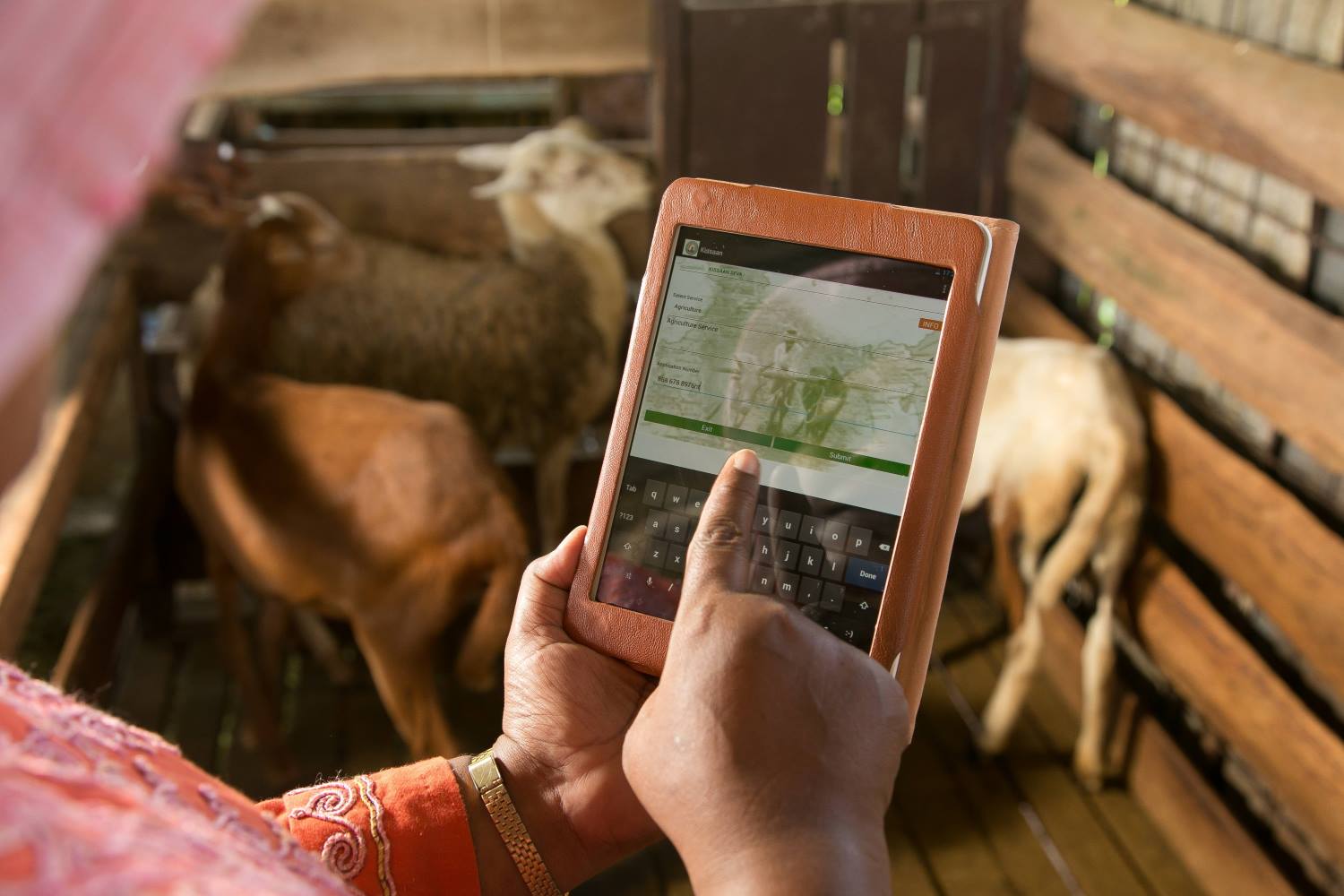Digital Agri Hub Dashboard - Towards a transparent digital agriculture ecosystem
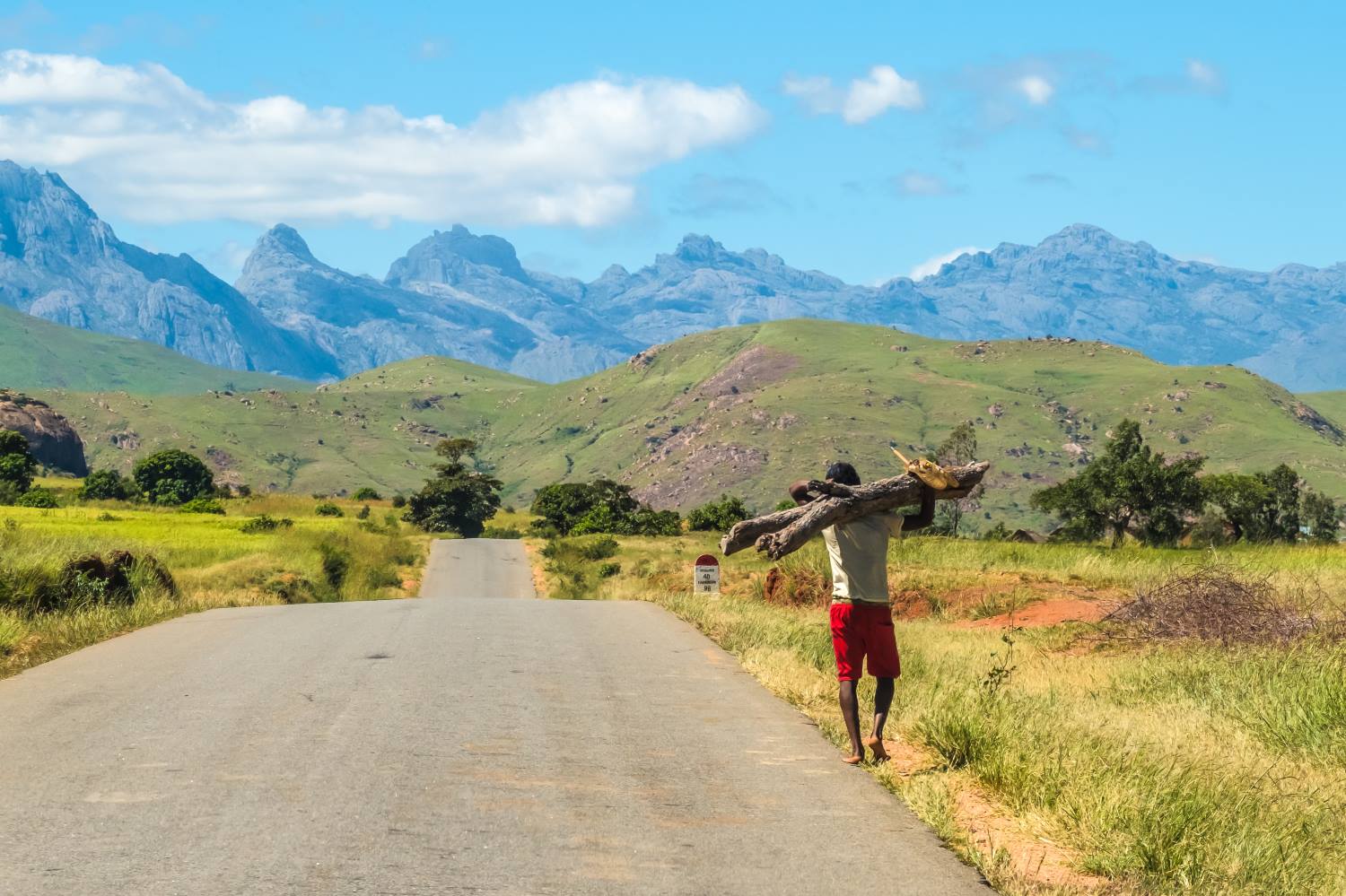
Digital Agri Hub Dashboard - Towards a transparent digital agriculture ecosystem
Author: Wageningen University & Research
Publish Date: 4 October 2022
Digital innovations in the agriculture sector continue to play a critical “enabling” role in transforming the livelihoods of 570 million small-scale producers (SSPs) in low- and middle- income countries (LIMCs). These innovations are improving the information position of SSPs concerning production, market access, financial inclusion and nutrition. They contribute to inclusive growth and jobs for SSPs and value chain players and support climate-resilient food systems. Globally, the rapid growth of the digitalisation for agriculture (D4Ag) sector has led to growing interest among development institutions, (impact) investors and governments in strengthening ecosystem support. At the same time, the sector remains fragmented, with many key players, and regional discrepancies in socio-cultural perspectives (e.g. engagement of women, youth and marginalised groups). Together with the fragmentation and lack of harmonisation and data governance of very heterogenous data repositories with often limited focus on the agriculture sector, this leads to a lack of a global overview of the global D4Ag ecosystem. To bridge this gap, the Digital Agri Hub pioneered the development of a D4Ag dashboard which now hosts 726 active digital innovations deployed in LMICs with global coverage. This is catapulted by self-reported data and collaborative initiatives with institutions such as Technical Centre for Agricultural and Rural Cooperation (CTA), Grow Asia, SkyQuest, AgriTerra, MercyCorps, IICA, Enabel and CCARDESA.
Our data journey
The Digital Agi Hub dashboard was publicly launched end of 2021. It built on the strong heritage of CTA’s the digitalisation of African agriculture report initially based on a database of 320 solutions in Africa. In its first year, the collection of digital solution data was made possible through collaborations with several stakeholders who had already made efforts to collect D4Ag data at the regional or country level. Besides, some leeway was provided for D4Ag innovators to submit their data or update existing solutions. As a result, the Hub has now evolved to offering a global database which provides harmonized insights on D4Ag innovations deployed in LMICs. The dashboard currently hosts a global dataset of 726 digital solutions, which is actively maintained, curated and further extended.
Along this road, we have encountered our fair share of challenges to effectively maintain and improve high-quality data and insights, and to embed it into a well-connected data ecosystem.
The D4Ag sector is evolving at unprecedented speeds. Many new solutions appear, and at the same time, unfortunately, also existing organisations and solutions fail to sustain their business. Consequently, we have seen significant changes over short periods, both in our data baseline, and in the external databases we merged. The initial CTA database of 320 solutions, for example, was outdated by an astonishing 27.20 per cent once integrated with our dashboard in 2021. Moreover, available data was often not sufficiently structured, with a lack of clear distinction between projects, solutions and organizations, and with outreach and usage data missing or incomplete in 80 percent of the cases. Hence, quality control and assurance of new data and further improvement and curation of the evolving data baseline have been crucial to maintaining and extending our dashboard.
While developing our database and merging data from different sources we immediately ran into the lack of clearly defined vocabularies and semantics around D4Ag, which made it hard to harmonise data and derive reliable insights. To anticipate on this, and to facilitate future data collection and data exchange, the Hub has compiled a set of concept definitions and taxonomies for D4Ag, using and harmonising knowledge from existing resources where available. We have used these guidelines to structure our own D4Ag data. They are also published on Digital Agri Hub for further uptake and reuse.
A consequence of the current fragmentation of the global D4Ag sector and associated data, is that also a lot of the knowledge is still only shared in regional and local networks. Being well connected with such networks is crucial to get a better view of the evolving ecosystem and, above all, to create the awareness and trust required for stakeholders to share their data. There we have encountered a substantial gap in inter-regional networking opportunities to create valuable synergies among stakeholders and facilitate the mobilisation of data to generate insights. Lack of awareness and trust on these levels still makes it hard to get complete coverage of initiatives, and particularly to tempt stakeholders to share often competitive data, e.g on outreach to SSPs and other user groups, financial aspects and impact.
Some key insights from our dashboard
The Hub’s dashboard provides a wealth of information on individual digital solutions and their deployment in different countries. Using data analytics and infographics, many valuable statistics are provided on the global data ecosystem, notwithstanding the dynamics of the domain and the gaps around competitive data.

Types of use cases supported
- Around two-third of the digital solutions support farm management and advisory
- Market linkage (33%) and supply chain management (29%) are also well represented
- Most digital solutions (54%) implement more than one use case, which might be an indicator for the movement towards bundling of services
Outreach to digital solutions
- 67% of the registered users are small-scale producers
- 52% of the registered users are youth (between the ages of 15 and 35 years)
- 32% of the registered users are women
Here it should be noted that these figures are based on a relatively small subset of solutions that have provided data on registered users and the distribution over one or more of these user groups.
Global coverage
- Most deployments of digital solutions on our dashboard are currently located in Africa, which is partly because the initial CTA baseline dataset was focused on Africa only. Moreover, there still seems to be an emphasis on Africa based on donor and investor focus
- Most deployments are currently available for India (145), Kenya (135) and Tanzania (89)
- For Latin America and the Caribbean, a limited amount of deployments is available, possibly partly due to a lack of data sources and a thus higher dependency on getting data out of regional and local networks
Applied Technologies
- There is a large variety of technologies that support the currently available digital solutions, with no “clear winner”
- The most applied technology in digital solutions is data analytics & business intelligence (21%), followed by Artificial Intelligence and cloud-based services (both at 19%)
Communication channels
- Mobile applications are clearly the most used channel to provide digital services to end users (45%)
- Other popular channels that are used by digital solutions in agriculture are SMS (21%) and Social Media (20%)
Call to action
Our dashboard aims to provide up-to-date data on existing digital agriculture innovations while setting a strategic foundation to steer investments and foster collaboration, co-development and learning for D4Ag value chain players globally. Being featured in our dynamic dashboard will build visibility on your solution to more donors, investors and solution implementation partners. If you are an active D4Ag solution provider deploying services in LMICs and want to be part of and benefit from our data journey, send us an e-mail and we will get in touch!
On short term, Digital Agri Hub will launch a data entry facility for digital service providers. This will be announced on our home page.
